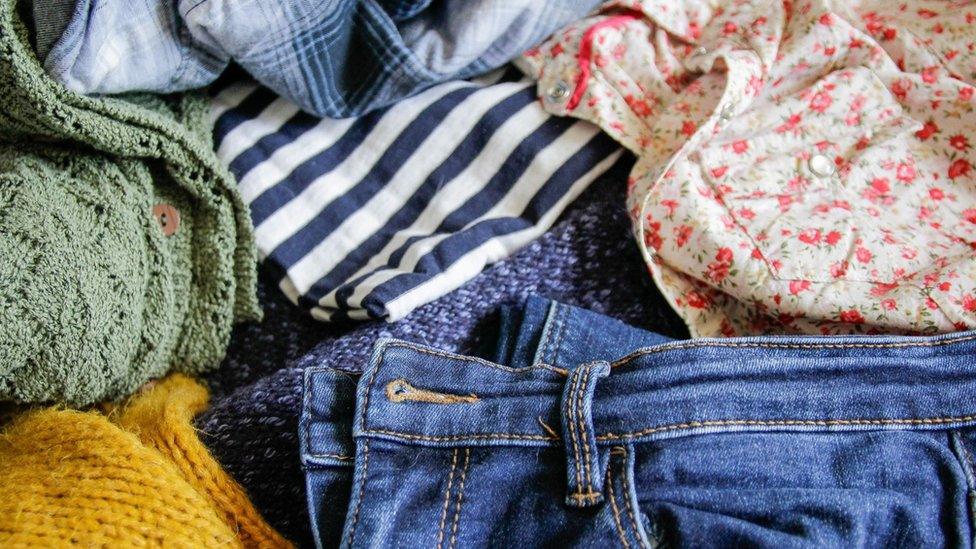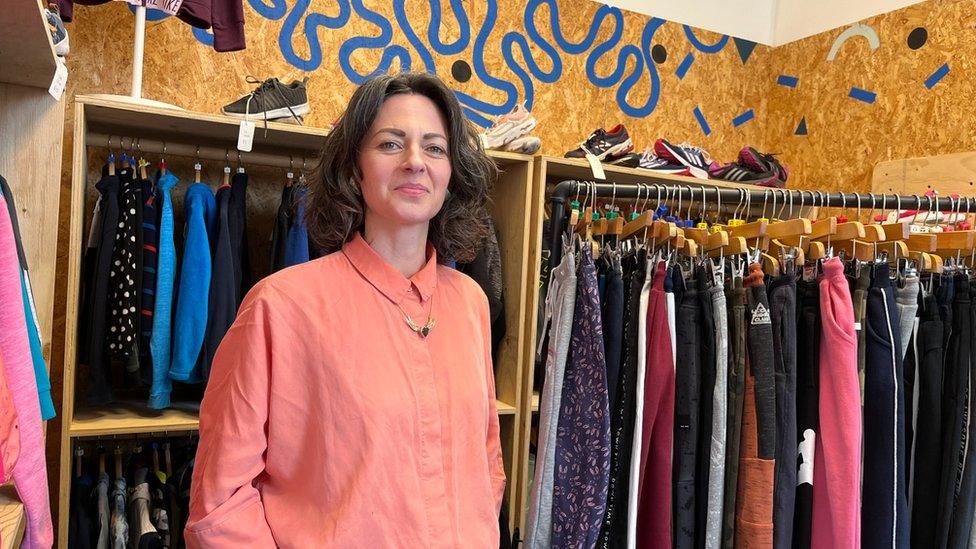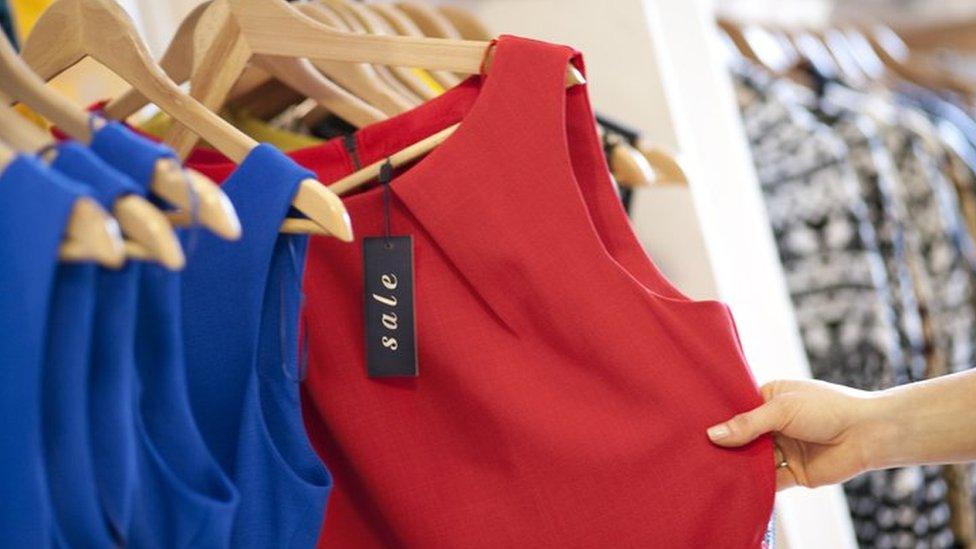Household textile waste worst for environment - Zero Waste Scotland
- Published

Textiles such as clothing and shoes are the most environmentally-damaging type of household waste in Scotland, according to a new study.
Zero Waste Scotland's carbon metric report, external tracks the full lifecycle impact of items thrown away by Scottish homes.
It found textiles were just 4% of what was binned in 2021, in terms of weight, but accounted for 32% of the carbon footprint generated by household waste.
The environmental body said Scots "need to rethink our consumption of goods".
The report looked at the emissions generated by the products Scottish households consume and then throw away.
This included the extraction of the raw materials which make up those products and the manufacturing of them - processes which often happen abroad. It also looked at the emissions from the disposal of household waste items through landfill or incineration.
The textiles category included clothing, shoes and carpets - with clothes and shoes accounting for about 80%.
Zero Waste Scotland said that the clothing we buy is often produced via long supply chains which generate large volumes of greenhouse gas emissions at every stage.
This might include the production of the yarn or the fabric and then the manufacture of the finished product, such as washing and dying. Each of these steps will create greenhouse gases in the country of production.

'Encouraging people to shop second hand'

Izzie Eriksen is the founder of the ApparelXchange social enterprise, based in the southside of Glasgow.
Its stylish shop sells second-hand clothes that come from donations, school drives or lost property.
The idea is to help people - particularly families with children - reuse clothes and cut down on global emissions as well as the fashion industry's impact on global communities.
Ms Eriksen says the shop has been designed to recreate a typical shopping experience, although admits items can be more expensive than the cheapest clothes sold on the high street.
She said: "Lots of people buy second hand already and it's part of the choices they make as consumers, but for a lot of others, they wouldn't choose to do that.
"We're trying to encourage people to go second hand - part of that is the experience they have when they come in, things are well displayed, it meets quality standards and the pricing and labelling so it's really easy to find.
"If we can see enough of that clothing continuing to circulate at that high level, then we're reducing the demand on the planet and on our global communities as well."

There was a slight overall increase in the total carbon footprint of Scottish household waste, rising by 0.9% on last year.
Zero Waste Scotland said the increase in textile waste was the main contributor to this.
Food waste was the second highest contributor to the carbon impact of household waste - making up 30% of greenhouse gas emissions, but only 18% of household waste by weight.
Iain Gulland, chief executive of Zero Waste Scotland, said: "If we're serious about tackling climate change we need to rethink our consumption of goods and materials.
"The average Scot consumes more than twice the sustainable amount of materials per year, and our throwaway culture encourages that approach. It's an environmental imperative that we turn this around."
The clothes we wear can have a huge impact on the climate, even more so than the aviation industry.
The Scottish government funded agency is encouraging Scots to "do things differently" and look to the circular economy model - where people are encouraged to reuse, donate and recycle products.
Mr Gulland added: "The circular economy gives us the opportunity do things differently without compromising on quality of life, evolving an economy that's better for both people and planet in which goods and materials are valued and made to last."


This is a problem which is hidden from official statistics since we only count greenhouse gases emitted on our own shores.
Most of our textiles, particularly clothes, are made abroad and emissions are attributed to the country of manufacture.
But the scale of the problem is not insignificant and, since we're creating the demand, really it's our problem.
Emissions from producing and making the raw materials for our textiles is equal to about two and a half times the greenhouse gases emitted from our international aviation and shipping in 2020.
And think how much pressure there is for us cut down the amount of time we spend in the air.

- Published22 December 2022

- Published23 August 2022

- Published24 June 2022

- Published14 August 2021
